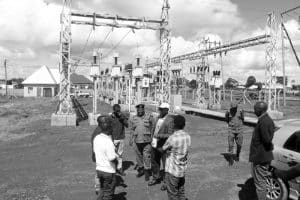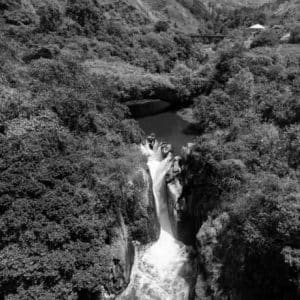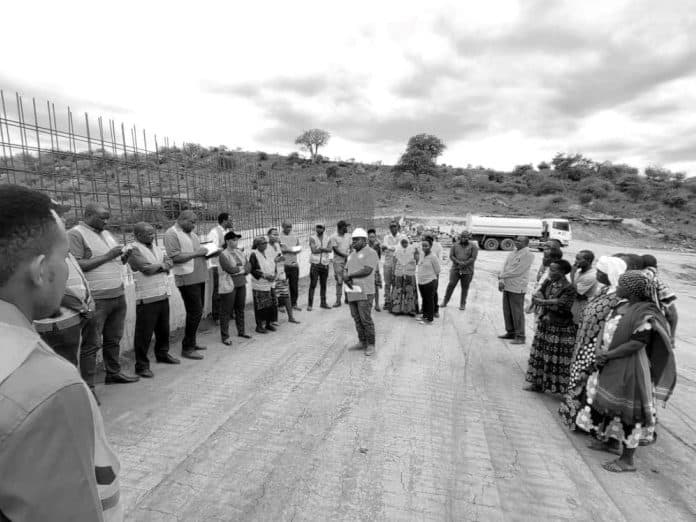Introduction to Songwe Power Station
The Songwe Power Station is a groundbreaking project that has captured the attention of energy enthusiasts and policymakers alike. Situated in the Songwe region of Tanzania, this impressive facility harnesses the power of hydroelectric generation to deliver a sustainable and eco-friendly source of electricity. With a total installed capacity of 222 megawatts (MW), the Songwe Power Station is a testament to Tanzania’s commitment to diversifying its energy mix and reducing its reliance on fossil fuels.
Importance of Songwe Power Station in Tanzania’s Energy Mix

As Tanzania’s energy landscape continues to evolve, the Songwe Power Station has emerged as a critical component in the country’s pursuit of energy security and self-sufficiency. By contributing a significant portion of the nation’s electricity generation, the Songwe Power Station helps to alleviate the strain on existing power sources, ensuring that Tanzanians have access to a reliable and consistent supply of electricity.
Overview of Tanzania’s Energy Sector
Tanzania’s energy sector has undergone a remarkable transformation in recent years, with a focus on diversifying its energy sources and promoting sustainable practices. While the country has traditionally relied on hydropower and natural gas, the government has made concerted efforts to explore alternative renewable energy options, including solar, wind, and geothermal. The Songwe Power Station is a shining example of this commitment, showcasing the country’s ability to harness its abundant natural resources to power its future.
Key Features and Specifications of Songwe Power Station
The Songwe Power Station is a marvel of engineering, boasting a range of impressive features that contribute to its efficiency and effectiveness. Some of the key specifications of the facility include:
- Installed Capacity: 222 MW
- Turbine Type: Francis Turbines
- Annual Energy Generation: Approximately 1,200 GWh
- Reservoir Volume: 1,590 million cubic meters
- Dam Height: 93 meters
- Transmission Lines: 220 kV
These technical details highlight the Songwe Power Station’s ability to generate a significant amount of clean, renewable electricity, making it a vital component in Tanzania’s energy infrastructure.
Benefits and Impact of Songwe Power Station on the Local Community
The Songwe Power Station’s impact extends far beyond its impressive technical specifications. The facility has also brought about substantial benefits to the local community, contributing to the overall development and well-being of the region. Some of the key impacts include:
- Job Creation: The construction and operation of the Songwe Power Station have generated numerous employment opportunities, providing stable incomes and economic opportunities for the local population.
- Improved Infrastructure: The development of the power station has led to the improvement of local infrastructure, such as roads, bridges, and access to clean water, enhancing the quality of life for the surrounding communities.
- Increased Electrification: The Songwe Power Station’s contribution to the national grid has increased the availability of electricity, enabling more households and businesses to access this essential resource.
- Environmental Sustainability: The hydroelectric nature of the Songwe Power Station promotes environmental sustainability, reducing the reliance on fossil fuels and minimizing the carbon footprint of the region.
Challenges Faced During the Construction and Operation of Songwe Power Station
The development and operation of the Songwe Power Station have not been without their challenges. The project has faced a range of obstacles, from logistical hurdles to environmental concerns, which the project team has had to navigate with skill and determination. Some of the key challenges include:
- Geographical Remoteness: The Songwe region, where the power station is located, is relatively remote, posing logistical challenges in terms of transportation, infrastructure, and access to resources during the construction phase.
- Environmental Considerations: The development of the power station has required careful consideration of the local ecosystem, ensuring that the project’s impact on the environment is minimized and that sustainable practices are implemented.
- Financing and Funding: Securing the necessary funding and investment for a project of this scale has been a significant challenge, requiring close collaboration between the government, international partners, and private stakeholders.
Despite these obstacles, the Songwe Power Station project team has demonstrated remarkable resilience and innovation, overcoming these challenges to deliver a world-class facility that is poised to transform Tanzania’s energy landscape.
Future Plans and Expansion of Songwe Power Station

The Songwe Power Station is not merely a static entity; rather, it is a dynamic and evolving project that is constantly adapting to the changing needs of Tanzania’s energy sector. The project’s stakeholders have already laid out ambitious plans for the future, which include:
- Capacity Expansion: There are plans to increase the Songwe Power Station’s installed capacity, potentially doubling or even tripling its current output to meet the growing energy demands of the country.
- Technological Upgrades: The project team is exploring the integration of advanced technologies, such as smart grid systems and energy storage solutions, to enhance the efficiency and reliability of the power station.
- Renewable Energy Integration: The Songwe Power Station is poised to serve as a hub for the integration of other renewable energy sources, such as solar and wind, further diversifying Tanzania’s energy mix and reducing its carbon footprint.
These future plans demonstrate the Songwe Power Station’s commitment to staying at the forefront of Tanzania’s energy transformation, ensuring that the country’s energy needs are met with sustainable and innovative solutions.
Comparison with Other Power Stations in Tanzania
The Songwe Power Station stands out among Tanzania’s power generation facilities, offering a unique blend of features and capabilities that set it apart from its counterparts. When compared to other power stations in the country, the Songwe Power Station boasts:
- Higher Installed Capacity: With 222 MW of installed capacity, the Songwe Power Station is one of the largest power generation facilities in Tanzania, surpassing many of the country’s existing power plants.
- Renewable Energy Generation: As a hydroelectric power station, the Songwe Power Station generates clean, renewable electricity, in contrast with Tanzania’s reliance on fossil fuels in some of its other power plants.
- Geographical Diversity: The Songwe Power Station’s location in the Songwe region diversifies Tanzania’s energy generation portfolio, reducing the country’s reliance on power plants concentrated in specific areas.
These comparative advantages highlight the Songwe Power Station’s unique position in Tanzania’s energy landscape, positioning it as a crucial component in the country’s pursuit of a sustainable and resilient energy future.
Environmental Considerations and Sustainability Efforts at Songwe Power Station
The Songwe Power Station has been designed and operated with a strong emphasis on environmental sustainability and responsible resource management. The project team has implemented a range of measures to minimize the facility’s impact on the local ecosystem, including:
- Ecological Impact Assessments: Comprehensive environmental impact assessments were conducted during the planning and development stages to identify and mitigate potential risks to the surrounding environment.
- Water Management Strategies: The power station’s water usage and discharge are closely monitored and managed to ensure the preservation of local water resources and the protection of aquatic ecosystems.
- Habitat Restoration: The project has invested in the restoration and conservation of natural habitats, including the replanting of indigenous vegetation and the protection of wildlife corridors.
- Renewable Energy Integration: The Songwe Power Station’s hydroelectric design promotes the integration of other renewable energy sources, such as solar and wind, further enhancing the facility’s environmental sustainability.
These sustainability efforts demonstrate the Songwe Power Station’s commitment to responsible stewardship of the environment, ensuring that the benefits of the project are delivered in a manner that is in harmony with the local ecosystem.
Conclusion: The Role of Songwe Power Station in Powering Tanzania’s Future Energy Needs
The Songwe Power Station stands as a shining example of Tanzania’s dedication to building a sustainable and resilient energy future. As the country continues to navigate the challenges of rapid economic growth and urbanization, this state-of-the-art facility will play a pivotal role in meeting the nation’s growing energy demands, while also promoting environmental sustainability and community development.
To learn more about the Songwe Power Station and its impact on Tanzania’s energy landscape, we encourage you to explore the project’s official website or reach out to the project team for further information. Together, we can work towards a brighter, more energy-secure future for Tanzania and its people.
For more articles related to Energy in Tanzania click here!
































